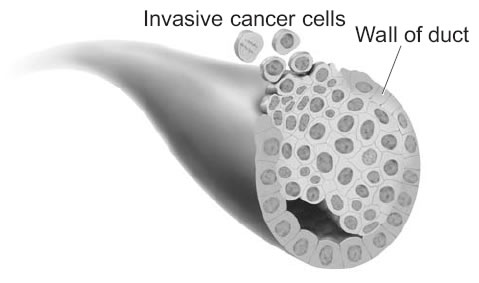5 Breast Cancer Classifications You Should Know About

Breast cancer awareness has progressed by leaps and bounds since the unofficial launch of the pink ribbon movement in 1991. The campaign has led to the creation of events, organizations, and programs that rallied the support of breast cancerpatients, survivors, and advocates. It also spurred the production of shirts, customized silicone wristbands, and otheritems and merchandisethat bear the pink ribbon logo. And these efforts were not in vain. Today, women — and men — are more open todiscussing the risk factors and symptoms of the disease. In turn, this heightened level of awareness facilitates early cancer detection and immediate treatment.
Checking for breast cancer usually involves looking for a lump in the breast area. However, it is important to note that breast cancer has many classifications, and sometypes do not manifest this telling symptom. In addition to having different signs and symptoms, each classification also has a different prognosis and appropriate treatment. Some of the most common types of breast cancer are:
Noninvasive Breast Cancer
A noninvasive breast cancer iscontained within the milk ducts or the lobules of the breasts. It has 2 types: Ductal carcinoma in situ (DCIS), the most common, and lobular carcinoma in situ (LCIS). These usually don’t show any symptoms save for an occasional discharge from the nipple or a lump. DCIS is typically treated with a lumpectomy followed by radiation and, if it is hormone receptor-positive, hormone therapy. LCIS, on the other hand, is not considered dangerous. If the tumor is hormone receptor-positive, the patient is sometimes offered hormone therapy to lower the risk of developing invasive breast cancer.
Invasive Breast Cancer
The most common types of invasive breast cancer are invasive ductal carcinoma (IDC) and invasive lobular carcinoma (ILC). IDC starts in the milk ducts while ILC starts in the lobules. These types invade the tissue surrounding the breast and metastasize to other parts of the body. IDC has many symptoms, such as persistent swelling or breast pain, lump(s) in the breast or armpit area, redness and thickening, and nipple discharge or changes. ILC does not form a lump; it instead causes the thickening or hardening of the affected tissue. Treatment for IDC involves surgery and radiation therapy. ILC can also be treated the same way, but this type of invasive cancer is more receptive to hormone therapy.
Inflammatory Breast Cancer (IBC)
Only 1 to 3% of breast cancer cases turn out to be IBC. This type does not form any lumps, but its symptoms include swelling and redness of the breasts, pain, itchiness, dimpling of the skin, and change in the appearance of the nipple. IBC is typically aggressive and it is usually treated with a combination of chemotherapy, radiation, surgery, and hormone therapy.
Paget’s disease of the nipple
Paget’s disease of the nipple accounts for about 5% of all breast cancer cases. This condition sometimes occurs with other forms of breast cancer. Its symptoms include nipple pain, weeping, and crusting, and itchiness and scaling of the nipple. It requires a combination of treatment, especially if the condition coincides with other types of breast cancer.
Triple Negative Breast Cancer
The breast cancer subtypes that fall under this category test negative for HER-2 and estrogen and progesterone receptors. Because of these characteristics, triple negative breast cancer types require combination therapies.